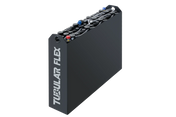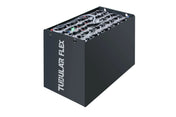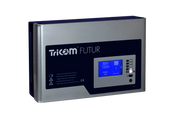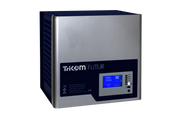The weight of your forklift battery not only determines which lifting and transport equipment can be used, but also directly influences safety , costs and driving stability . Here you will find practical weight ranges for common voltage classes from 24 V to 80 V as well as a comparison between lead-acid and lithium-ion systems .
Why weight is crucial
The battery weight influences several safety-relevant aspects:
- Stability: A battery that is too light can reduce the counterweight of the forklift and impair its tipping stability.
- Transport & Handling: Heavy batteries require tested lifting equipment and traverses with sufficient load capacity.
- Costs: Freight, assembly and maintenance costs increase with mass.
- Driving behavior & axle load: The battery weight directly affects the axle loads and influences braking behavior and cornering stability.
Factors influencing battery weight
Voltage and capacity
- Voltage (V): The higher the voltage, the more cells – and the heavier the battery (e.g. 80 V = 40 cells of 2 V).
- Capacity (Ah): More ampere hours mean longer runtime, but also more active mass.
Cell type and construction
- Lead-acid: Heavy, robust and inexpensive – standard in many traction applications.
- Lithium-ion: About 30–40% lighter , depending on cell chemistry (e.g. NMC vs. LiFePO₄) and module design.
- Modular systems: Compact cell blocks with lighter housings save additional weight.
Housing and equipment
- Material: Plastic or aluminum housings significantly reduce the overall weight compared to steel containers.
- Cooling & Protection: Passive or active cooling systems increase weight by 5–10%.
Typical weight ranges of forklift batteries
| Tension | Capacity (Ah) | Lead-acid (approx.) | Li-Ion (approx.) |
|---|---|---|---|
| 24 V | 300 Ah | 350 – 380 kg | 200 – 230 kg |
| 48 V | 500 Ah | 650 – 720 kg | 300 – 350 kg |
| 80 V | 775 Ah | 1,200 – 1,400 kg | 700 – 850 kg |
| 80 V | 1 000 Ah | 1,500 – 1,700 kg | 900 – 1 050 kg |
Safety aspects and testing obligations
- Load capacity: Hoists and traverses must be able to support 1.5 times the battery mass .
- Annual inspection: According to DIN EN 13155 , crane hooks, traverses and lifting gear must be inspected and marked at least once a year by a qualified person.
- Ergonomics: Use scissor lifts or battery changing stations to avoid back and crush injuries.
- Forklift inspection: Check regularly that the total weight does not exceed the permissible axle load or the load center of the vehicle.
Depth of discharge (DOD) and driving dynamics
As the depth of discharge (DOD) increases, the usable energy content decreases – and with it the effective counterweight in the vehicle. At 80% DOD, a battery loses approximately 10–15% of its original counterweight, which can affect stability and braking performance . Therefore, both capacity buffers and stability reserves should be taken into account in the design.
How to choose the right battery
- Analyze load profile: Record lifting cycles, shift duration and peak loads.
- Plan for reserves: At least 20% capacity buffer to limit DOD.
- Check battery compartment: Check dimensions, load capacity and attachment points.
- Adjust charger: Select the appropriate charger from our range ( view here ).
Conclusion
The weight of a forklift battery affects safety, driving behavior and cost-effectiveness equally. By considering realistic voltage and capacity values, complying with testing requirements according to DIN EN 13155 and incorporating DOD effects into the planning, you can ensure maximum stability, longevity and efficiency in daily use.







